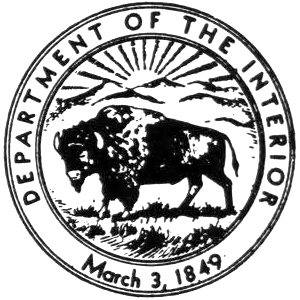
Geology of
Devils Tower
National Monument
Wyoming
By CHARLES S. ROBINSON
A CONTRIBUTION TO GENERAL GEOLOGY

The National Park Service and the Devils Tower Natural HistoryAssociation wishes to thank the United States Geological Surveyfor their kind permission to have this Bulletin reprinted withminor changes.
CONTENTS
- Page
- Abstract 1
- Introduction 1
- Geology 3
- Devils Tower 3
- Sedimentary rocks 6
- Spearfish formation 6
- Gypsum Spring formation 7
- Sundance formation 7
- Stockade Beaver shale member 8
- Hulett sandstone member 8
- Lak member 9
- Redwater shale member 9
- Stream terrace deposits and alluvium 10
- Talus and landslide material 10
- Structure 11
- Geologic history 11
- Origin of Devils Tower 12
- Selected bibliography 13
ILLUSTRATIONS
- FIGURE Page
- 52.—Index map showing location of Devils Tower National Monument 2
- 53.A.—Northwest side of Devils Tower showing how the columns taper or converge and in places unite near the top and are cut by numerous cross-fractures 4
- B.—Southwest corner of Devils Tower showing the columns flaring out and merging to form the massive base 4
- 54.—Generalized section of the sedimentary rocks of the Devils Tower National Monument 6
A CONTRIBUTION TO GENERAL GEOLOGY
GEOLOGY OF DEVILS TOWER NATIONAL MONUMENT, WYOMING
By Charles S. Robinson
ABSTRACT
Devils Tower is a steep-sided mass of igneous rock that rises above the surroundinghills and the valley of the Belle Fourche River in Crook County, Wyo.It is composed of a crystalline rock, classified as phonolite porphyry, that whenfresh is gray but which weathers to green or brown. Vertical joints divide therock mass into polygonal columns that extend from just above the base to thetop of the Tower.
The hills in
...BU KİTABI OKUMAK İÇİN ÜYE OLUN VEYA GİRİŞ YAPIN!
Sitemize Üyelik ÜCRETSİZDİR!